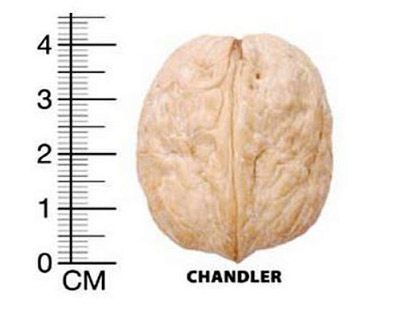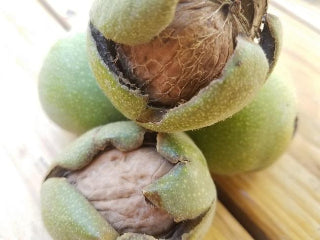Scientific classification
- Scientific Name: Juglans Regia
- English Name: Walnut,Persian Walnut,English Walnut,Carpathian Walnut,Madeira Walnut,Common Walnut,American Black Walnut
- Family: Juglandaceae
- Genus: Juglans
- Type: Deciduous Trees
- Country Of Origin: China
Juglans regia is a large deciduous tree, attaining heights of 25-35m, and a trunk up to 2m in diameter, commonly with a short trunk and broad crown, though taller and narrower in dense forest competition. It is a light-demanding species, requiring full sun to grow well.
The bark is smooth, olive-brown when young and silvery-grey on older branches, and features scattered broad fissures with a rougher texture. Like all walnuts, the pith of the twigs contains air spaces; this chambered pith is brownish in color. The leaves are alternately arranged, 25-40cm long, odd-pinnate with 5-9 leaflets, paired alternately with one terminal leaflet. The largest leaflets are the three at the apex, 10-18cm long and 6-8cm broad; the basal pair of leaflets are much smaller, 5-8cm long, with the margins of the leaflets entire. The male flowers are in drooping catkins 5-10cm long, and the female flowers are terminal, in clusters of two to five, ripening in the autumn into a fruit with a green, semifleshy husk and a brown, corrugated nut. The whole fruit, including the husk, falls in autumn; the seed is large, with a relatively thin shell, and edible, with a rich flavour.
Uses: Walnut heartwood is a heavy, hard, open-grained hardwood. Freshly cut live wood may be Dijon-mustard colour, darkening to brown over a few days. It is prized by fine woodworkers for its durability, lustre and chatoyance, and is used for high-end flooring, guitars, furniture, veneers, knobs and handles as well as gunstocks.


